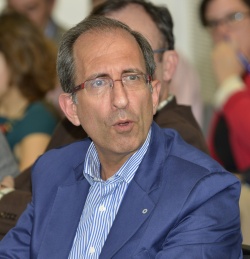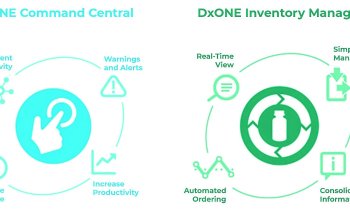Update
Hepatitis C management in Spain
Leading Spanish experts presented the latest developments in hepatitis C management in their country during the May meeting of the Spanish Society of Infectious Diseases and Clinical Microbiology (SEIMC) in Seville.
Report: Mélisande Rouger

The global hepatitis C epidemic is constantly evolving – its prevalence, incidence, contamination mode and genotype distribution have altered considerably over the last decades. Current estimates suggest that up to 180 million individuals are infected with the hepatitis C virus (HCV) worldwide.
In Spain, the incidence and prevalence have decreased significantly over the past decade and, according to Dr Miguel Angel Simón from Lozano Blesa University Hospital in Zaragoza, just 1% of the population is now HCV positive. ‘We estimate that about 467,000 people are HCV positive, but only 162,049 of them have actually been diagnosed.’
Liver disease revalence is expected to rise
Diagnosis in those patients is crucial because HCV can trigger liver cirrhosis in 10 to 40% of cases and, at worst, liver failure and hepatocellular cancer (HCC). The prevalence of these diseases is expected to rise in the near future. ‘Compensated cirrhosis is expected to rise by 55% by 2030; decompensated cirrhosis should also rise by 60%, HCC associated to VHC by 105% and hepatic mortality by 95%,” Simón said.
The burden of the disease on the healthcare system is already significant. Thirty percent of all 1,093 liver transplants in Spain were attributed to VHC alone in 2013. New research shows that the virus transmission modes have also changed. Nosocomial transmission could be responsible for 73% of cases diagnosed in tertiary hospitals, especially when multidose tubes are used, Simón explained. ‘Out of 131 cases of acute hepatitis C between 1989 and 2010, 40% could have had nosocomial origin, according to studies published in 2008 and 2012.’
Sexual transmission is not an efficient transmission mode, but is possible. Fairly uncommon in stable heterosexual couples, HCV prevalence is high and rising in HIV co-infected homosexual males. Cases of reinfection are also more common in this population.
HCV is currently the first cause of death in HIV patients, a 200,000 strong population in Spain. As many as 30 to 40% of HIV patients are HCV+, and complications of HCV can be lethal. Prevalence is also higher among prison inmates, as much as 20-30 times more than in the rest of the population. Finally, intravenous drug use is responsible for about 10% of the infection and 80% of intravenous drugs users are VHC+ in Spain.
New drugs start a revolution in treatment
Prevalence of HCV, however, is expected to decrease by 45%, thanks notably to revolutionary antiviral treatments. ‘There has been a complete revolution in hepatitis C treatment. New drugs are very effective and well tolerated. One year ago, we had drugs with an efficacy of 30-60% that were very badly tolerated; most of the patients could not end the treatment. Now it’s completely different, and it all happened within the past twelve months,’ said Jesús Rodriguez Baño, President of the SEIMC Scientific Committee.
Efficacy of the new antivirals is 85-95% within 12 weeks. The drugs target specific strains (or genotypes) and are designed to generate a strong T-cell immune response against HCV. T cells are found to be important in those patients who can clear the virus naturally.
Three big families of antivirals are currently being developed: the ‘…asvirs’, which are NSSA inhibitors blocking the replication complex formation; the ‘…buvirs’, NS5B polymerase inhibitors; and the ‘…previrs’, NS3/4 protease inhibitors.
Their power has changed the perception of their patients by epidemiologists, according to Dr Javier Crespo from Marques de Valdecilla University Hospital in Santander. ‘There’s been a great change in the perception of patients who traditionally did not respond to treatment, for instance patients with renal insufficiency or HIV,’ he explained. ‘Daclatasavir combined with sofosbuvir in HIV co-infected patients has a similar efficiency to mono-infected treatment.’
The next step – screening the population
Efficacy has a price. Sovaldi, for instance, costs $1,000 per day, or $84,000 for the typical 12-week course. It will be critical for healthcare providers to prioritise patients according to the acuteness of their case in a first stage, Rodriguez Baño stressed.
The next step would be to screen the population. ‘First we must treat patients with liver disease and cirrhosis, then we will treat HCV+ patients who don’t have a serious disease, and finally we should screen patients to look for new populations. This has to be discussed soon.’
PROFILE:
Following his role as head of the Digestive Hospital Miguel Servet, in Zaragoza, Miguel Angel Simón became head of the Gastroenterology department at Lozano Blesa University Hospital, Zaragoza. He is also Associate Professor at the Faculty of Medicine, University of Zaragoza, where he had gained his bachelor of medicine and gastroenterology specialist qualifications in 1980 and 1985. In 1990, he also received a medical degree from the University of University of Navarra. Today, Dr Simón’s main interests lie in advanced endoscopy, endoscopic therapy and hepatology – especially viral hepatitis
24.11.2015








